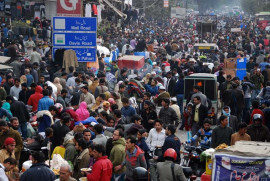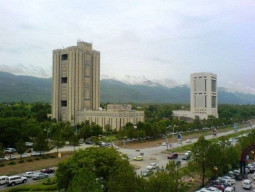
It seems that its short stint in office, the Abbasi government is taking more decisions in the national interest as compared to the Sharif government whose only concern seemed to be Punjab. It is a good policy to tackle challenges head on – instead of sweeping them under the rug.
The results are, by and large, what we expected. They are not comforting. Pakistan’s population has surged to a staggering 207.8 million, showing an increase of 75.4 million people in 19 years. By any standards, the rate at which Pakistanis have proliferated is impressive.
While these are provisional summary results, the numbers are unlikely to change much. In comparison, the population was just over 130 million in 1998, the year when the 5th census had been conducted. This means the country has seen a 57% increase in the population at an annual rate of 2.4%. This is somewhat a world record. The only two areas where we seem to be registering high numbers seem to be population and poverty.
At the same time, the question is, where do we go from here. A number of changes need to be enacted soon. For example, while the majority of the people – 52.9% to be precise – still live in Punjab, but its share in the population pie has declined when compared with the 1998 census results.
Balochistan and Khyber-Pakhtunkhwa are the beneficiaries of the reduction in Punjab’s share, as Sindh’s share in the total population remains unchanged – at 23%. This means more federal resources and more seats in parliament for Balochistan and K-P. When will this happen?
According to the summary results, the country’s predominant majority – 132.189 million or 63.6% – still lives in rural areas. This ratio was 65.6% in 1998 when the last headcount was conducted. In comparison, the urban population stands at 75.58 million, which is roughly 36.4% of the country’s population. In 1998, the share of the urban population was 32.52%. This means that there will be shift in resources in favour of urban areas.
Sindh is in a special quandary. It is the most urbanised province having 52.02% population in urban areas – a result that could disturb rural-urban quotas of the provincial assembly seats and jobs. Of the total urban population of the province, 68% is concentrated in three major cities – Karachi, Hyderabad and Sukkur. This would mean more resources, jobs and representation to the urban areas. Is the PPP willing to concede this to the MQM?
We are looking also at Balochistan where it is predicted that the Pashtun population may have exceeded the Baloch population. This will have far reaching implications.
The CCI has now decided that the figures will be further debated in the Inter-Provincial Coordination Committee (IPCC) where a strategy will be devised about the future course of action. This is where the government has to change job quotas, fund allocation and the ECP has to adjust representation.
The ECP had informed the government that it may hold the next general election on the basis of the new census results, if the results are finalised in time.
In all this, there is a disclaimer as well. The population census results are exclusive of Azad Jammu & Kashmir and Gilgit-Baltistan. The Pakistan Bureau of Statistics (PBS) conducted the census in the two territories but did not release their results as part of the country’s population due to their special status.
The challenge for us goes beyond jobs and funds. We have an unusually high number of young persons and there is no strategy in place under which they are to be given gainful employment. If this is not done, there can be consequences.
The census should be a basis of planning not division. If we know where we stand, we can then look at how to address the issues that relate to our rising population. Maybe this will allow us to re-introduce a family planning program like the ones we had in the 80’s.
Despite all the other issues that we face, let us understand that the biggest issue for us remains population. If we do not address this time bomb, everything else will be secondary.
Published in The Express Tribune, August 28th, 2017.
Like Opinion & Editorial on Facebook, follow @ETOpEd on Twitter to receive all updates on all our daily pieces.



































1713853507-0/MalalaHilary-(2)1713853507-0-270x192.webp)








COMMENTS (2)
Comments are moderated and generally will be posted if they are on-topic and not abusive.
For more information, please see our Comments FAQ